Anesthesia Pharmacology Chapter 1: General Principles: Overview and Introduction
Chiral refers to molecule with a center of three-dimensional asymmetry.
Definiton: Chirality- "handedness"; (Greek cheir - the hand); molecules which are not superimposable on (cannot be made to coincide with) their mirror image. achiral molecules can be superimposed on its mirror image.
Many drugs, over 50% of all drugs actually, are chiral (existing as enantiomeric pairs)
Enantiomers (molecules having opposite shapes) are pairs of molecules existing in forms that are mirror images of each other (right-& left-hand) but that cannot be superimposed
Other than lack of superimposition, enantiomers are chemically identical, but may be distinguished by the direction in which they rotate polarized light, either dextro (d or +) or levo (l or -) {light rotational effect determined in solution).
"Plane-Polarized Light Rotation: Plane-polarized light is light in which all wave vibrations have been filtered out except for those in one plane. Passing light through a polarized lens allows only one wave direction to be transmitted. When the plane-polarized light wave is then passed through a solution containing a single enantiomer of a compound the light is rotated by a certain amount either clockwise or counter clockwise.
"Optical Rotation is the rotation of plane-polarized light.
Optically Active compounds are chiral compounds which possess the ability to rotate plane-polarized light.
A polarimeter is an instrument which polarizes light and then shows the angle of rotation of plane-polarized light by an optically active compound.
Specific rotation - the degree of rotation by 1.00 gram of compound in 1.00 mL of solution measured in a tube with a 1 decimeter path length. The amount of
rotation is also dependent on the temperature (usually room temp), wavelength (typically the D line of sodium, 589.3 nm) and solvent." -Dr. Nanette Wachter-Jurcsak, Hoftra University
Chemical identity is associated with true enantiomers, i.e. associated with a single asymmetric molecular center; If the molecule has 2 asymmetric centers, the molecule is referred to as a diasteriomer.
Diasteriomers have differing physiochemical properties
Consider the above, hypothetical 2 enantiomeric models (1 & 2), each containing a single chiral carbon as well as molecular form 3 which is non-optically active.
Only one of the enantiomers can make a correct 3-point contact with the corresponding receptor position represented by figure 1 above left: (A in the molecule matches up with the alpha location on the receptor; B in the molecule matches up with the beta location on the receptor and G in molecule matches up with the gamma location on the receptor. [Above figure from Principles of Drug Action: The Basis of Pharmacology, Third Edition, edited by William . B. Pratt and Palmer Taylor, Churchill Livingston, New York, 1990. p 14: Fig 1-8]
Enantiomers present in equal proportion (50:50) are referred to as racemates.
Ways looking at chirality:
Chirality has to do with "right or left handedness"
If an item appears identical to its image in a mirror it is said to be "achiral" -- an example would be a water glass.
The basic issues a comparison between an object and its reflection -- if an object is different from its reflection it is said to be chiral; for instance, ones left-hand and right hand are chiral
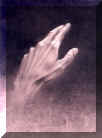
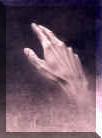
Note also that when you put your left-hand up to mirror, the image that appears is a right hand--thus illustrating that left and right hands are in fact mirror images of each other.
Note the structure of
thalidomide:
Thalidomide is chiral, i.e. left and right-handed molecular forms are present
One form produced sedation
The other form was responsible for fetal abnormalities.
Although the primary therapeutic use for thalidomide today is in treatment of leprosy, in particular a disease complication called erythema nodosum leprosum, thalidomide appears effective in treating certain cancers.
Anti-cancer mechanisms include: (1) a reduction in inflammatory proteins including tumor necrosis factor alpha, (2) immune system modulation and (3) an anti-angiogenesis property which blocks formation of new blood vessels. Tumor growth is dependent on angiogenesis.
Thalidomide
|
|
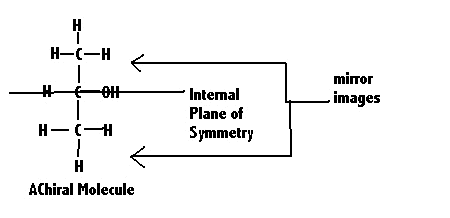
|
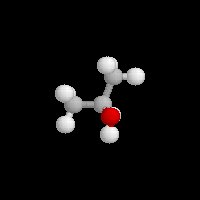
|
From the molecular pointed view, an achiral (NOT chiral) molecule will exhibit an internal symmetry plane, the basis for the mirror image (above); by contrast, a chiral molecule (below) will exhibit an asymmetric center (carbon) and therefore will not exhibit internal symmetry planes
The molecule pictured above is called 2-propanol can we can find one internal plane of symmetry-- note the line passing through H-C-OH and the methyl groups (CH3) symmetrically present both above and below the symmetry line. Each half of the molecule will be an exact mirror image of the other half and will be superimposible.plane of symmetry
By contrast, the molecule pictured below, named 2-butanol exhibits no internal plane of symmetry. In the absence of a plane of symmetry, mirror images will NOT be superimposible and therefore constitute enantiomers of each other.
Furthermore, chiral molecules will have a carbon atom with four non-equivalent groups attached to it. This carbon is therefore asymmetric and is designated a stereocenter.
Examining 2-propanol above we note that the center carbon has two equivalent groups attached to it, the two methyl groups 2 x CH3.
By contrast, in the 2-butanol structure below, we can identify a carbon which has in fact four different groups attached to it: CH3, H, OH, CH2-CH3.
We can identify common objects whose mirror images are superimposible. For example, a baseball bat has a symmetry plane running through from top to bottom-- but not so the baseball glove. A glass of water has a symmetry plane, again from top to bottom of the glass -- but not so with a pair of shoes.
Figures above and below from: "Enantiomers and Chirality" by R. H. Logan, Instructor of Chemistry, Dallas County Community College District, North Lake College. (C) 1997 at"http://oscar.cprost.sfu.ca/~rhlogan/chiral.html"
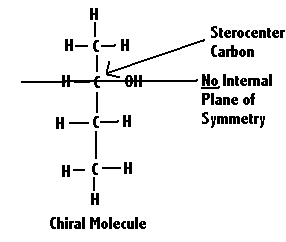 |
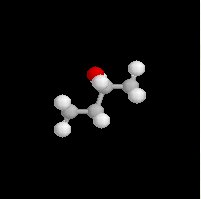
S-2-butanol |
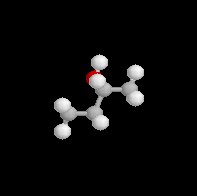
R-2-butanol |
Formal Definitions:
Chirality refers to a molecular property indicating "handedness". A chiral molecule is not superimposable on its mirror image, has no plane of symmetry, and rotates plane-polarized light. All molecules are chiral when they have one stereogenic (asymmetric) carbon.
Stereoisomer refers to isomers that have the substituent bonding pattern but have different 3D arrangement of the atoms.
Stereoisomers may appear as enantiomers or diastereomers.
Enantiomer refers to a type of stereoisomer. Recall that enantioners are nonsuperimposible mirror-images of each other.
Enantiomers have identical physical properties other than the direction that a solution of each enantiomer rotates plane-polarized light.
The asymmetric center of one enantiomer exhibits an opposite configuration, meaning R or S designation, compared to the other enantiomer. The relationship between the absolute configuration (R or S) and the direction of rotation of plane-polarized light (dextrorotatory or levorotatory, i.e. d- or l- form) is not simple.
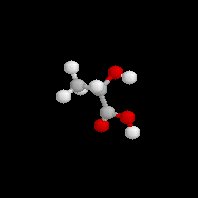
S-Lactic Acid |
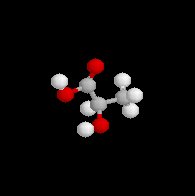
R-Lactic Acid |
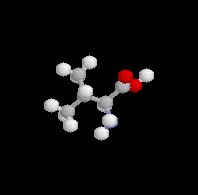
S-Valine |
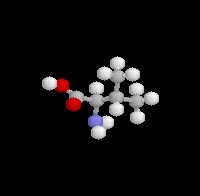
R-Valine |
Diastereomers are stereoisomers that are NOT mirror images of each other, by contrast to entantiomers which have stereoisomers that ARE mirror images of one another.
Diastereomers have differing arrangement of atoms in space. One example would be Cis-Trans isomers. The comparison between cis- and trans-2-butene is an example of a pair of diastereomers that do not have asymmetric carbon atoms.
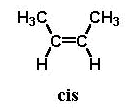 |
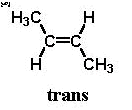 |
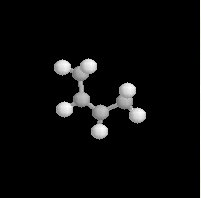
|
 |
Drugs with two asymmetric centers have four diasteriomers (e.g., labetalol (Trandate, Normodyne): an alpha and beta-receptor antagonist)
![]() Usually one enantiomer will
be more effective than its mirror
structural image-- suggesting a more
complementary fit between the drug with
its receptor binding region.
Usually one enantiomer will
be more effective than its mirror
structural image-- suggesting a more
complementary fit between the drug with
its receptor binding region.
Examples:
S(+)- methacholine enantiomer > 250 times more potent than the R(-) enantiomer form
Ketamine (Ketalar): (+) enantiomer more potent, less toxic then the (-) enantiomer; however, the drug is used as the racemate (includes both enantiomeric forms)
Other enantiomeric differences important in anesthesia:
Cardiotoxicity associated with bupivacaine is probably due to the d-bupivacaine (Marcaine) isomer, perhaps because d- bupivacaine (Marcaine) occupies the sodium channel longer than l- bupivacaine (Marcaine).
Ropivacaine (Naropin),related to bupivacaine (Marcaine), is synthesized as a single enantiomer, exhibiting decreased cardiotoxicity.
Cisatracurium (Nimbex), an atracurium (Tracrium) isomer, does not promote histamine release.
d- propranolol (Inderal) is the form than blocks β-adrenergic receptors; however, both enantiomers exhibit "local-anesthetic" effects.
The antiarrhythmic properties of propranolol (Inderal) therefore, depending on concentration, may include both β-adrenergic blockade, at lower concentrations (d-propranolol (Inderal)), as well as a direct membrane effect which is not require stereoselectivity.
Recently, a drug, dexmedetomidine (Precedex), which has been approved by the FDA for sedation of critically ill patients in the ICU setting, is a good example of a drug which, in the l-, form has no effect on halothane (Fluothane) MAC; however, the d- form dramatically reduces halothane (Fluothane) MAC.
Dexmedetomidine (Precedex), presently used (on-label) in the ICU setting, exhibits the ability to produce a state of patient "tranquility" in which patients appear asleep but are easily aroused and exhibit no significant respiratory depression.
![]() The example in
which the d- form of dexmedetomidine (Precedex)
significantly reduces the halothane (Fluothane)
MAC value serves to reinforce the idea of that
anesthetic requirements are influenced
importantly by other drugs which may be
concurrently used.
The example in
which the d- form of dexmedetomidine (Precedex)
significantly reduces the halothane (Fluothane)
MAC value serves to reinforce the idea of that
anesthetic requirements are influenced
importantly by other drugs which may be
concurrently used.
Other examples in which such interactions are prominent include benzodiazepines and opioids.
Naturally occurring agents used in anesthesia are typically stereospecific because enzymes exhibit stereoselectivity:
Examples:
l- morphine
d- tubocurarine
3Mechanistic implications of enantiomer-selective biological effects:
Concerning the mechanisms of anesthetic action, an important aspect was derived from the observation that there was a significant correlation between anesthetic potency and lipid solubility (Meyer-Overton rule).
Generally, this rule had been applied to inhaled anesthetics rather than intravenous drugs.
Lipid solubility is an important physical-chemical property of drugs that is important in getting the drug to the site of action (lipid bilayer-based membrane structure).
How anesthetics work however does not appear to be explained solely on the basis of lipid solubility.
A clue comes from the observation that some anesthetics exhibit some degree of enantiomer-selectivity.
Examples of such agents include barbiturates, etomidate (Amidate), and isoflurane (Forane).
Enantiomer-selectivity suggests a protein (receptor) involvement since presumably proteins exhibit the degree of molecular specificity required to select preferentially one enantiomer from another in terms of biological efficacy.
A more general point, is that the way biological specificity works depends upon precise 3-D alignment of molecular groups and therefore is intrinsically, most of the time, stereoselective i.e., preferring one stereoisomer over the other.
Such selectivity is reflected not only in one drug enantiomeric form being either more potent or less potent than another but also in the body prefers one amino acid isomer over another (typically the in l- form).
Recall that this specificity is embedded at the deepest levels of enzyme, transport proteins, and nucleic acid interactions with biomolecules.
3Examples of anesthetic interaction/receptor sites:
Transmitter-gated ion channels
GABA (gamma-aminobutyric acid) and glycine receptors
At anesthetic concentrations, all intravenous anesthetic drugs enhance GABAa (subtype a) receptor-mediated effects. Recall that GABA systems are inhibitory
Some anesthetic agents inhibits excitatory responses associated with nicotinic, cholinergic receptor activation, whereas others inhibits ionotropic glutamate receptor types (glutamate is an excitatory neurotransmitter)
Anesthesia action may be based on both activating inhibitory neurotransmitter-receptor CNS systems and inhibiting excitatory neurotransmitter-receptor CNS systems.
|
|
|
Katzung, B. G. "Basic Principles: Introduction" in Basic and Clinical Pharmacology, (Katzung, B. G., ed) Appleton-Lange, 1998, p.1-4
Stoelting, R.K., "Pharmacokinetics and Pharmacodynamics of Injected and Inhaled Drugs", in Pharmacology and Physiology in Anesthetic Practice, Lippincott-Raven Publishers, 1999, 1-17
3Dolin, S. J. "Drugs and pharmacology" in Total Intravenous Anesthesia, pp. 13-35 (Nicholas L. Padfield, ed), Butterworth Heinemann, Oxford, 2000